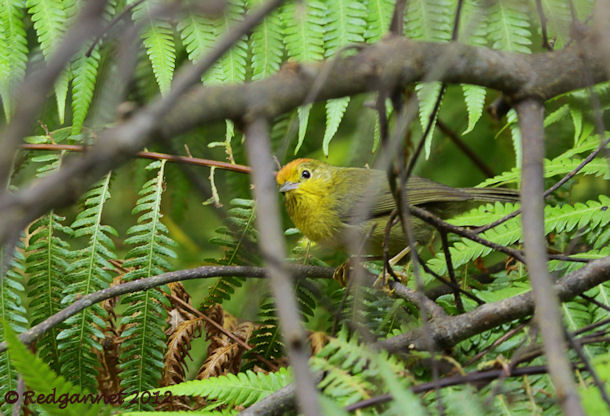As so often happens, the main
excitement at Tai Po Kau came in the lay-by at the entrance to the reserve. As
soon as I crossed the road from where green minibus 28K dropped me, birds began
to show. Scarlet Minivets are my
favourite bird here and were the first to be seen in small numbers. They were
part of a feeding group that spent about 20 minutes in the trees at the north-west
end of the lay-by.
Depending on how neurotic, beg your
pardon, diligent, you are about your life list, it is well worth checking the field
guide to confirm status of many of the Tai Po Kau songbirds. Other species that
have established a population from originally captive stock include Blue-winged Minla, Silver-eared Mesia and Rufous-capped
Babbler.
http://redgannet.blogspot.co.uk/2012/03/tai-po-kau-hong-kong-march-2012.html
Accompanying them were the usual
suspects including Japanese White-eye,
Great Tit, Yellow-browed Warbler and Velvet-fronted
Nuthatch. The nuthatch is one of the denizens of Tai Po Kau that have made
a home there after escaping from captivity.
Thirteen of the visit’s twenty
birds were seen at the lay-by before even starting up the hill, including this
morning’s life bird, a Black-winged Cuckoo-shrike.
Up and into the forest I went. The
coral trees have showy red flowers that attract many varieties of bird, but at
this time of year they are in leaf rather than flower.
Paris Peacock Papilio paris
In the garden at the
Outdoor Education Centre (Google
Earth ref; 22°25'48.05"N 114°10'51.51"E), were butterflies and some
dragonflies in the small pool.
Lesser Blue Skimmer Orthetrum triangulare
Red-faced
Skimmer Orthetrum Chrysis
Following the road around gives
access onto the path system. I suspect that there may be an aviary or exotic
collection in one of the private houses there as many unlikely calls emanated
from beyond a fence.
As usual, I chose the Red Route which describes a 3 km
loop through the forest. A few steps and slightly rough stretches of path
exist, but for the most part, the route is easy to walk and well maintained.
Very few birds were seen for the
large part of the walk, with a consistent call frustrating me. As I came full
circle, the path crosses the stream and a Common Blue Jewel, Rhynocypha perforata, damselfly caught
my eye. A few males were jousting above the stream’s surface while females waited provocatively.
Birds seen; 20
Black Kite 1, Spotted Dove 6, Black-winged Cuckoo-shrike 2, Scarlet Minivet 8, Grey -chinned Minivet 2, Great
Tit 15, Yellow-cheeked Tit 1, Velvet-fronted Nuthatch 3, Red-whiskered Bulbul
15, Light-vented Bulbul 6, Chestnut Bulbul 2, Yellow-browed Warbler 3, Japanese
White-eye 20, Silver-eared Mesia 2, Blue-winged Minla 10, Rufous-capped Babbler
3, Oriental Magpie Robin 3, Scarlet-backed Flower-pecker 2, Fork-tailed Sunbird
3, Gray Wagtail 1
Tai Po Market Station is on the East Line. Taxis are easily available from the station and cost $HK25 (@ $HK12 = £1) at the time of writing. Green minibus 28k runs up the hill from the railway station and stops close to the lay-by. Ask the driver for Tai Po Kau (pronounced How). There is usually a steady flow of taxis past the lay-by for return, unless it is raining.
The East Line connects to the rest of Hong Kong’s transport system at Hung Hom or Kowloon Tong.
Buses 102 and 106 leave from just outside the World Trade Centre on Hong Kong Island (starting just after 06.00. For a really early start try N170 from the same stop, or the 24 hour bus N122 which runs every 15 mins from the first bus stop on Hennessey Road, opposite Sogo). They run through the tunnel to Hung Hom Station and a chap could be on an East Line (formerly known as the KCR, Kowloon Canton Railway) train heading to China in moments. Using the subway system would involve 3 changes of train to achieve the same result. Returning to the island, the buses run from the first stair off the footbridge out of Hung Hom Station.
Tai Po Market Station is on the East Line. Taxis are easily available from the station and cost $HK25 (@ $HK12 = £1) at the time of writing. Green minibus 28k runs up the hill from the railway station and stops close to the lay-by. Ask the driver for Tai Po Kau (pronounced How). There is usually a steady flow of taxis past the lay-by for return, unless it is raining.
The East Line connects to the rest of Hong Kong’s transport system at Hung Hom or Kowloon Tong.
Previous posts from Tai Po Kau can be
found at the links below;
http://redgannet.blogspot.co.uk/2010/12/hong-kong-twitching-pt-1-tai-po-kau.htmlhttp://redgannet.blogspot.co.uk/2012/03/tai-po-kau-hong-kong-march-2012.html
Visit the dedicated Asia Page for
more from Hong Kong, including; Sha Lo Tung and Long Valley.


















































